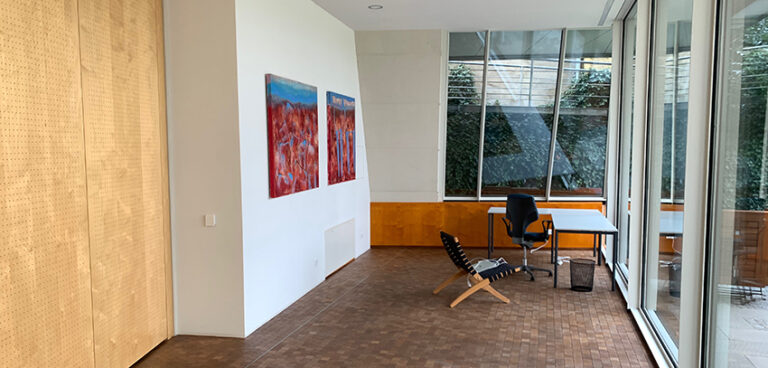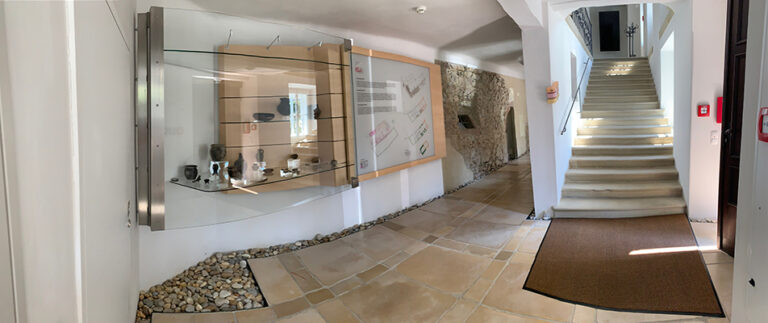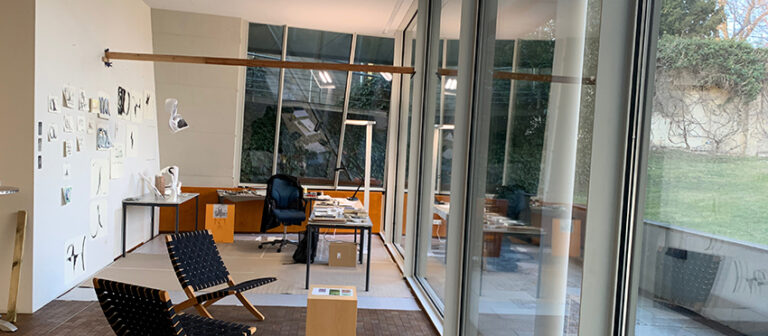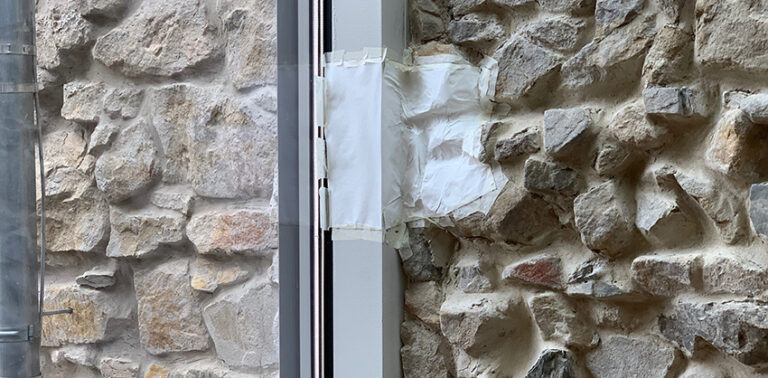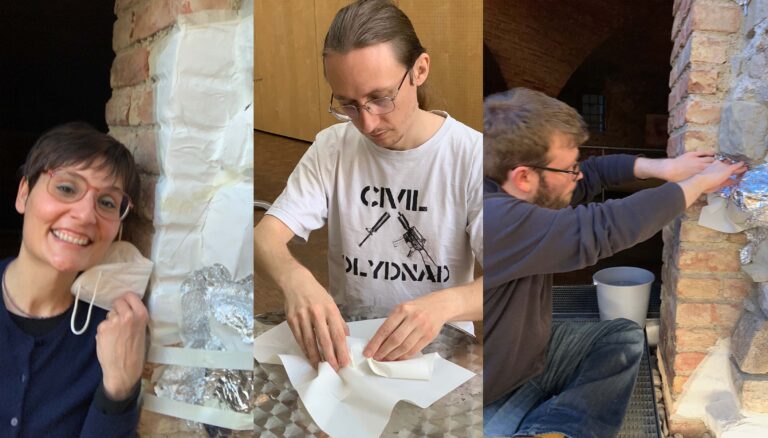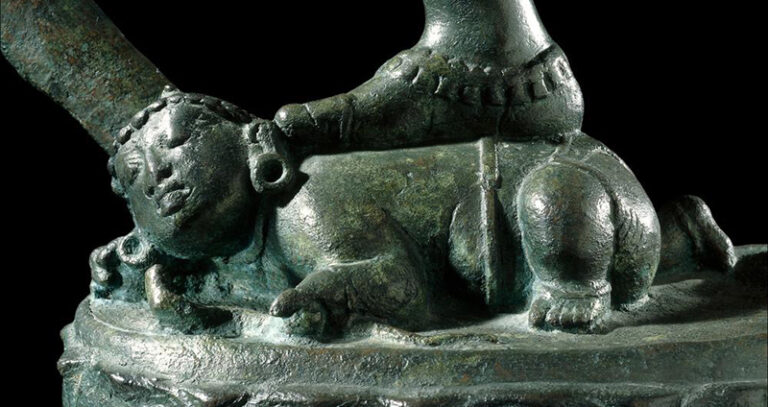Week 3: January 30 - February 5
Group activities
Interviews and conversations with Fellows
Museums Quartier bookstore: ideas for responding to architectural environment
Group lunches in the Cantinetta
Experiments:
Ink and watercolor studies
3-D models with watercolor and ink
Paper and object studies
Engaging measurement?
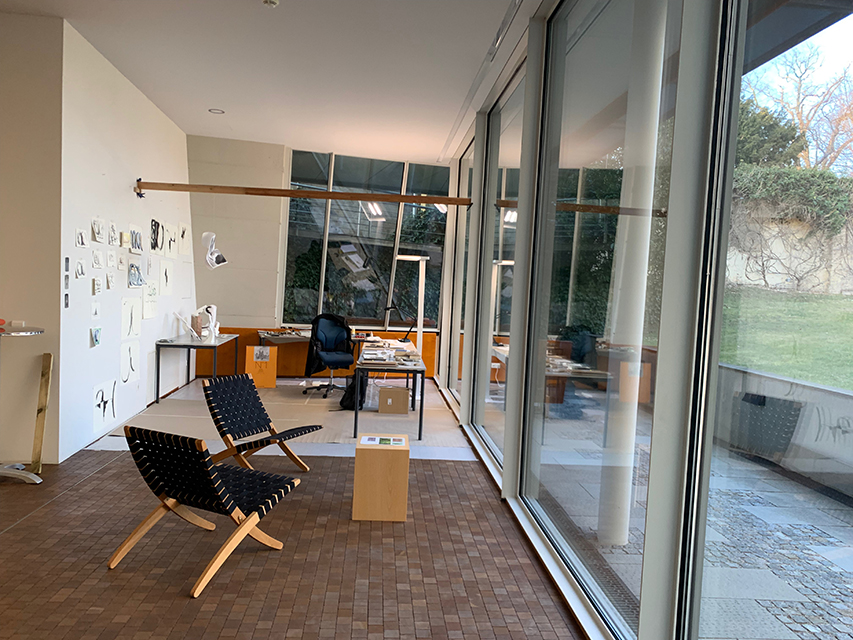
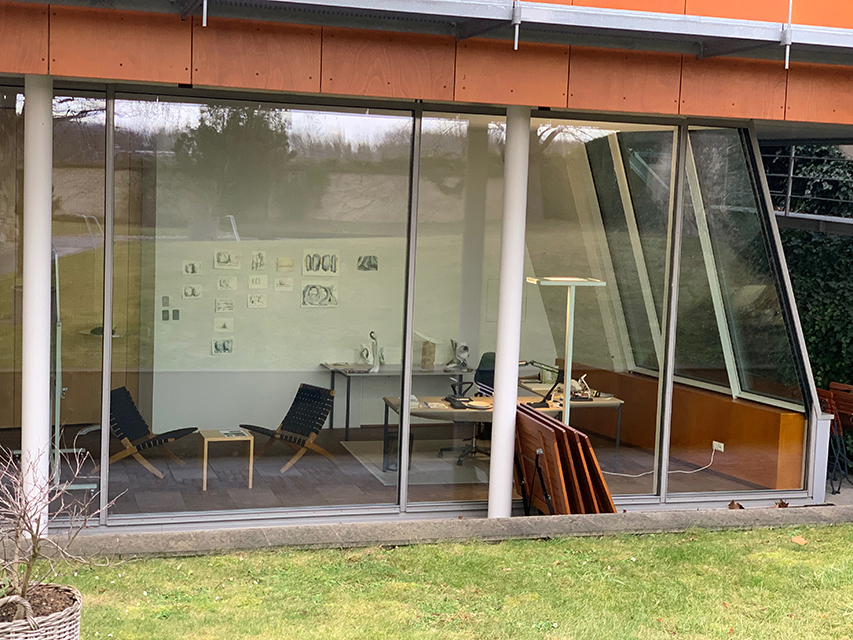
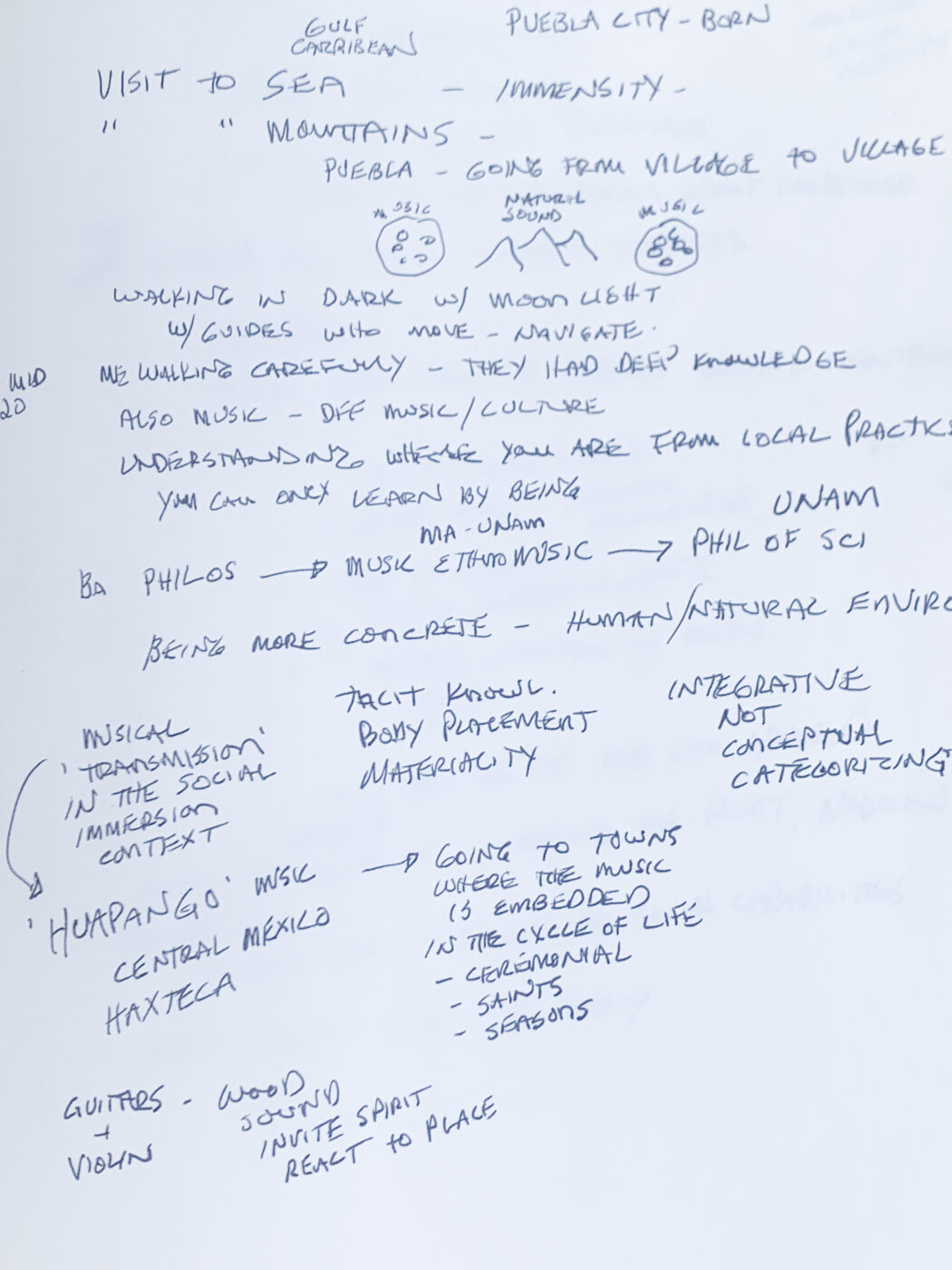
Everything is allowed: the Interviews and conversations with the Fellows
During the week the fellows are giving presentations, working on theses, and have all generously consented to meet with me for one on one interviews in which they share their academic histories, educational orientations and research backgrounds after responding to my initial invitation to share a formative experience they may have had in ‘nature’. When they sit down with me in my studio space with the view of the garden and sky, I use an image of one of my site-specific installations that direct the viewer’s attention to tree-shaped ‘negative spaces’ made by the trees and my suspended panels. They have already heard me speak about this from my brief introductory talk in which I proposed the interview process as part of my effort to further investigate what I have described as the ‘threshold of unknowing’. So at the outset of the interview I remind them that they are an integral part of my emergent project. This larger notion of ‘project’ is a sum that is greater than but inclusive of, all the shared orientations to their pursuit of knowledge, understandings and experiences etc, and will contribute either consciously or intuitively to development of my creative process and direction.
As one can imagine, their responses have been beyond ricn and in most cases beyond my poor power to do more than scan and parse the basic outlines. The compressed duration of the interview, which I keep to only an hour, sweeps like the alpine wind past valleys of philosophies, philosophers, biologists, historians, architects, paradigms, theories, positionings and vantage points, as I breathlessly try to scribble notes, names, titles and key phrases.
Such a panoply of worlds unfolds. The responses have all been entirely fascinating of course and in the space of an hour quite a range of relationships emerges. The first question about ‘nature’ for example, really opens up the discussion, not least because of the multiple continents and respective environments that each experienced, but also the varied degrees of access to ‘nature’ since more than a couple grew up in densely urban settings. This open-ended question is intended to shape a kind of narrative that brings various contexts of childhood activities, perceptions of surrounding people, places, things as well as influential individuals or encounters with natural environments, flora and fauna, into the subsequent discussion of their work. Nature can be many things to many people. Not surprisingly the way in which a culturally idealized notion of nature can absolutely oppressive, intensely limiting because it doesn’t allow for its fully inclusive, vast and chaotic reality.
The interview’s last phase is an invitation to share the kinds of activities beyond their professional work or research that they find sustaining or restorative. This can include anything. I also ask about art and whether literature, music- theater- visual art etc might be important or play an important role in their ‘imaginarium’ and in some way nurture creativity in their research. The range of responses is very diverse of course and includes activities such as ‘aerial silk’ movement, an epiphany on seeing Friedrich’s ‘Monk by the Sea’ painting, the writing of fictional short stories, the immersion experience on the combined effects of techno music track mixes while dancing within the light and dark strobe shifts of a Berghain (Berlin) nightclub, a Lucio Fontana painting seen in the context of a Milan rooftop exhibition space overlooking the Duomo and the busy piazza, or the way that listening to intervals in music and to the intervals between the calls of specific bird species calls inspires awareness of absent birds or rather, birds that are known and likely to be present in these conditions but cannot be seen.
How does all this come into my process? Everything is allowed and I keep drawing.
There is a spirit of openness that has been cultivated here and I am so fortunate to have been invited into it. Just in passing I have had so many interesting conversations that I wish had been recorded. EG I spoke with one of the Fellows whose background and orientation includes a highly developed visual sensitivity. This Fellow was picking up so many relationships in my drawings, 3d models and images on my wall the way another artist would. All this is possible because my studio and emerging sculptural activity is situated in the middle of the KLI environment, with no doors to discourage drop-ins, pauses and chats.
Vienna Museums Quartier bookstore ideas
Defining space with paper? Wire rimmed planes of glued paper suspended.
Repetition using paper and color?
Movement and energy through color and directionality to transform and specific architecture?
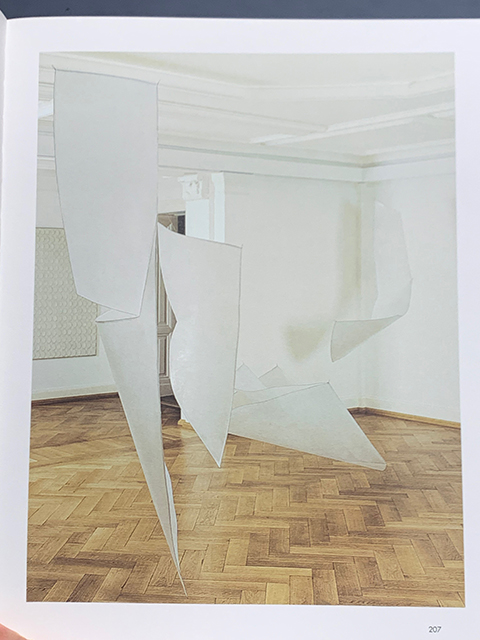
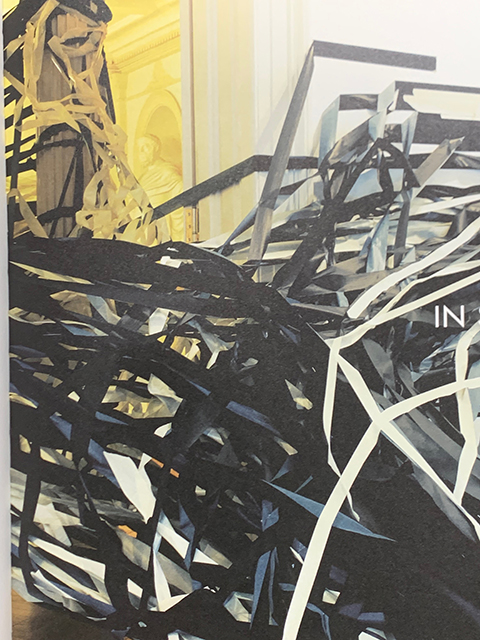
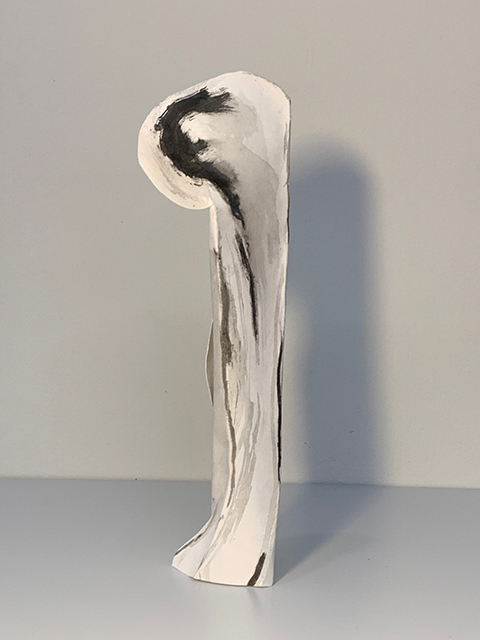
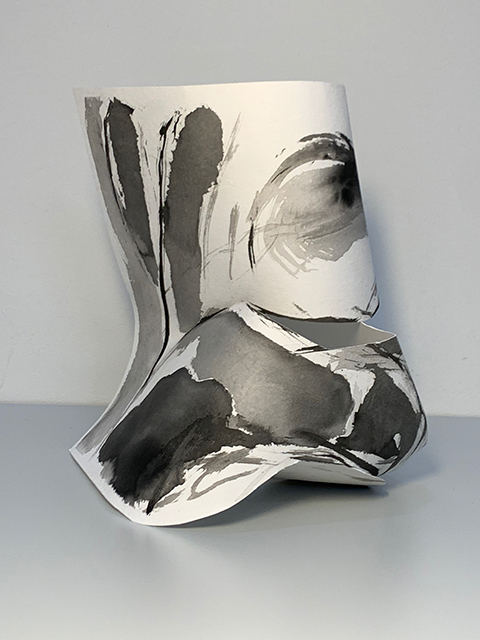
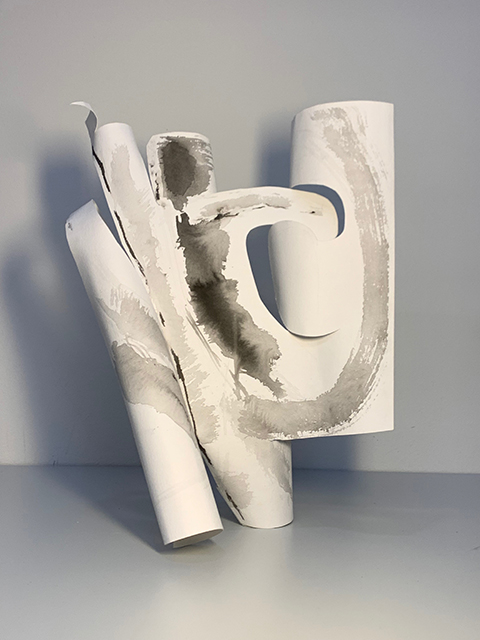
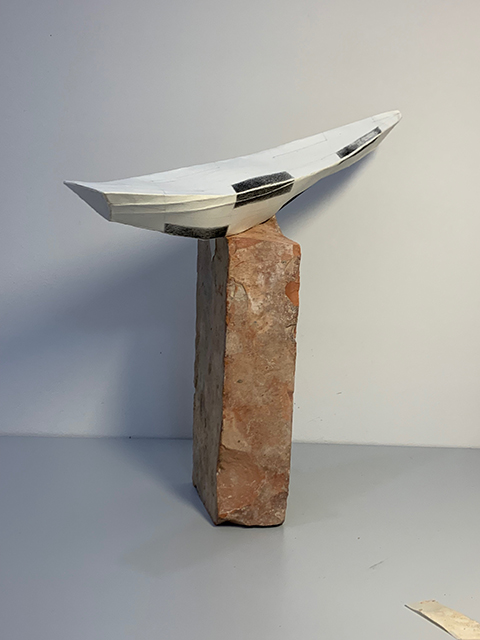
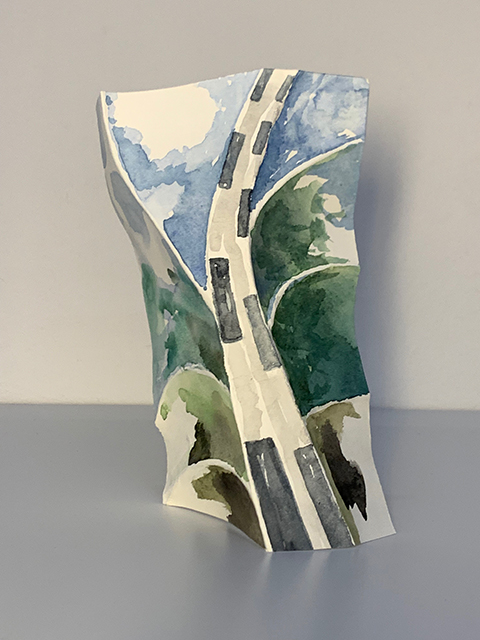
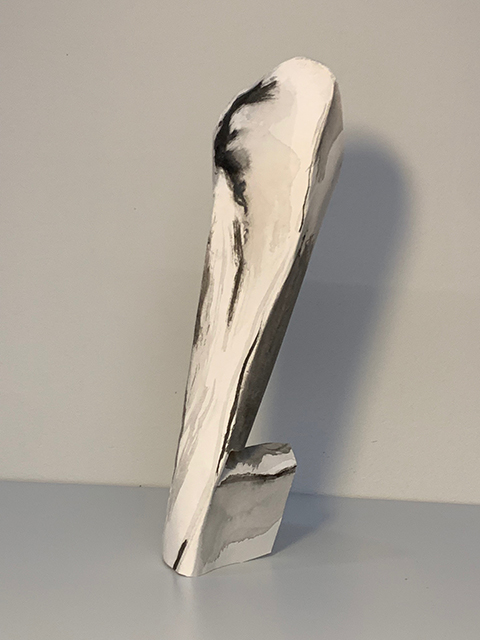
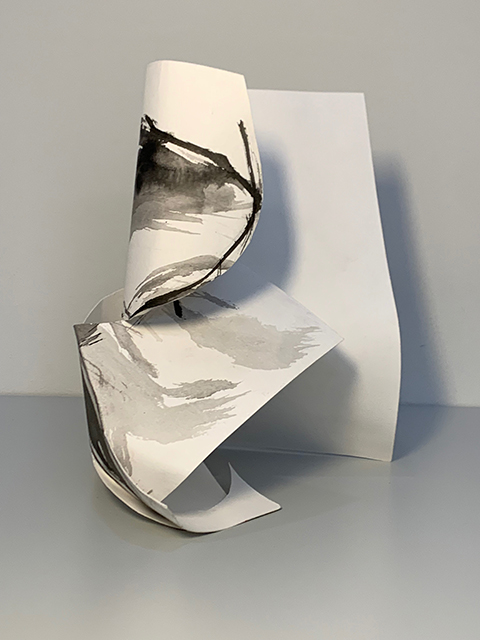
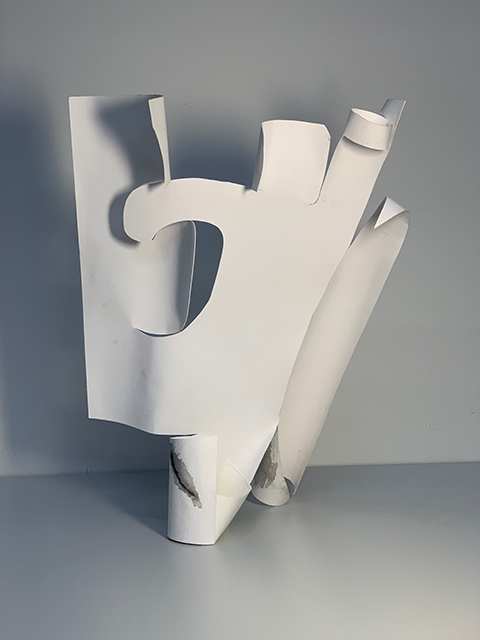
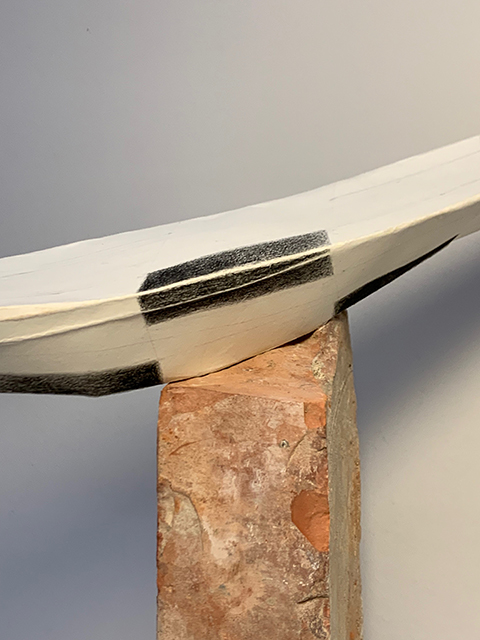
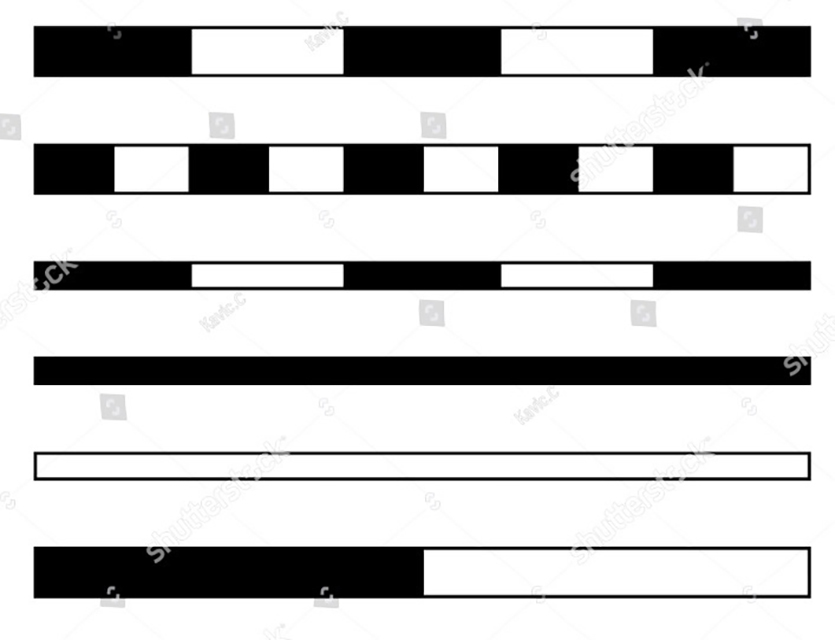
Next steps:
Buying materials and collecting tools to test viability.
OBI (local Home Depot type megastore)
Local shops: Pagro (dept store), Libro (home-office), Painting supplies



